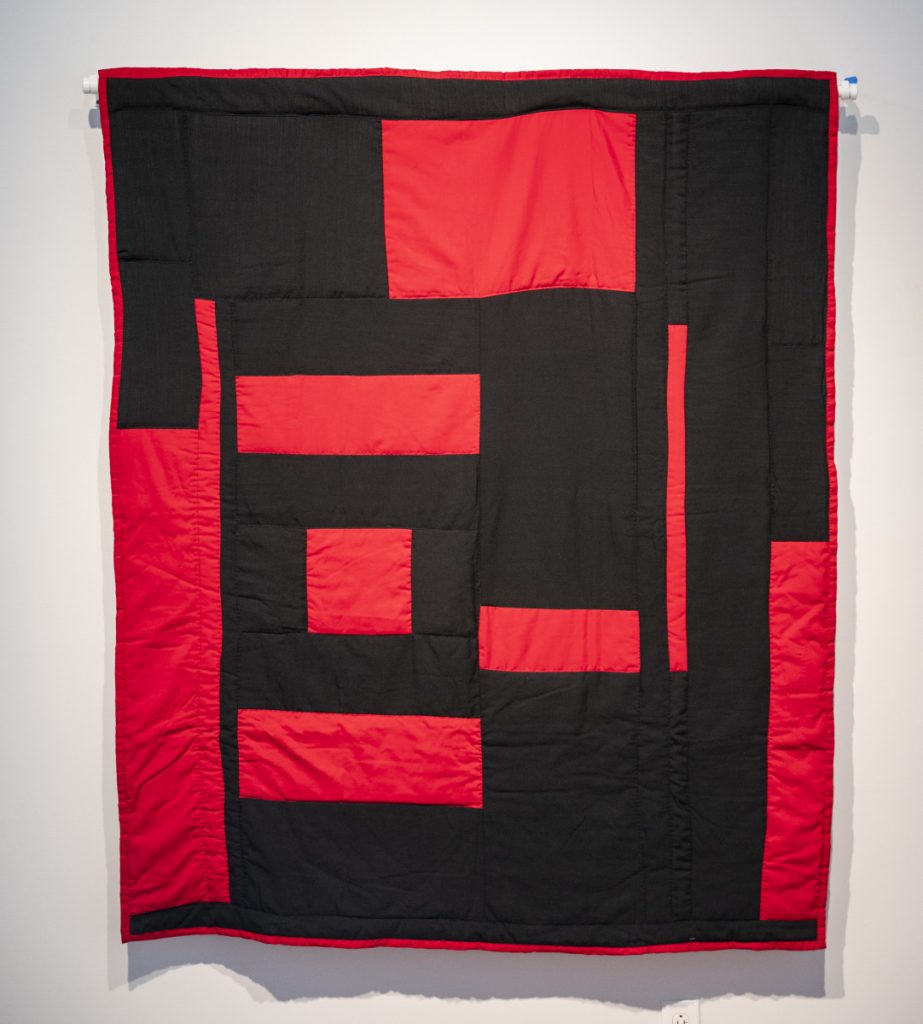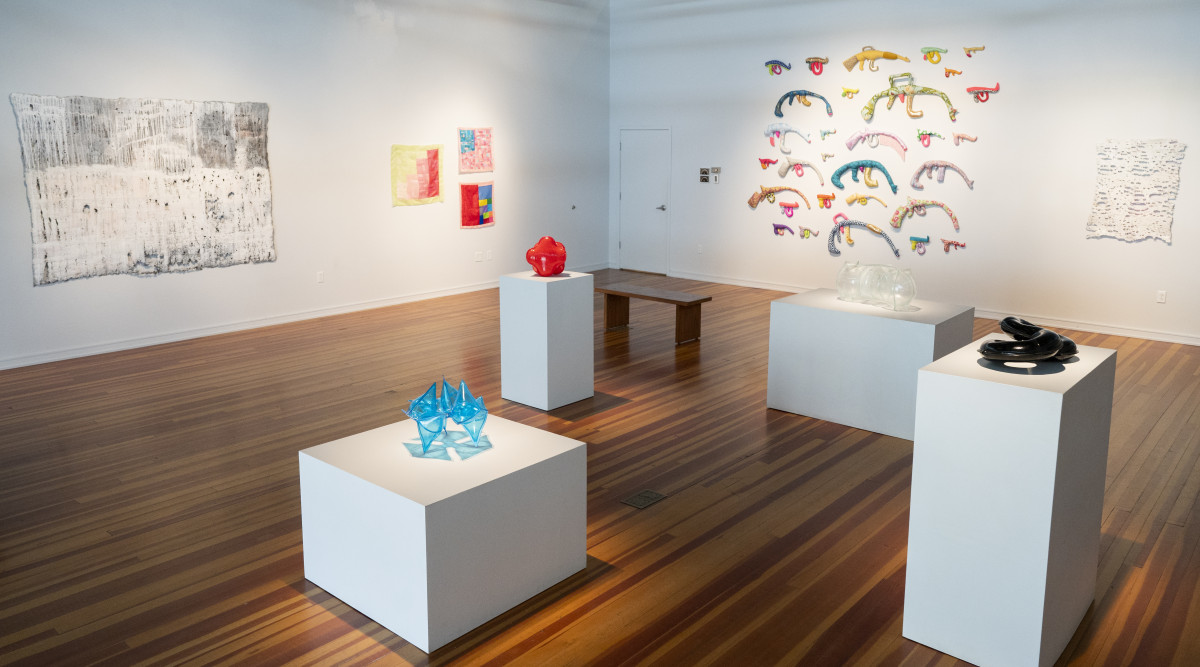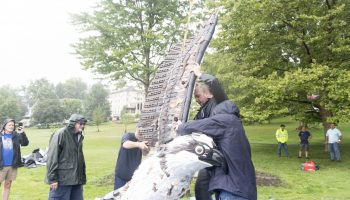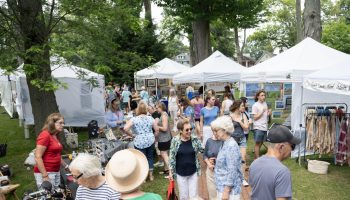Family traditions are often passed down from generation to generation, although many can be lost as time progresses. Quilt-makers, however, preserve family traditions and histories in fabric and stitches.
Growing up, fifth-generation quilt-maker Loretta Pettway Bennett would thread needles for her grandmother, mother and auntie. Now, Bennett is seaming together the threads her ancestors left behind.

“Quilting is in my genes and DNA,” she said. “… All I really had to do was pick up a needle and start again.”
Bennett’s quilts are being featured in the exhibition “Squaring Up Histories,” which opens today in the Strohl Art Center, and whose theme coincides with both the Week Four discussion on “The Future of History” and Week Nine’s “An American Tapestry.” An opening reception is scheduled at 3 p.m. Thursday, July 28, in Strohl, and includes an artist talk with Bennett at 4:30 p.m.
Erika Diamond, curator of the exhibition and assistant director of Chautauqua Visual Arts Galleries, said that the talk will include a Q-and-A session, giving attendees the opportunity to ask Bennett questions in a group setting.

The seven artists in the exhibition each juxtapose traditional American and international quilt-making practices with contemporary themes, issues and techniques. In her “Warm Gun” pieces, artist Natalie Baxter highlights the contentious issue of gun control and male aggression with her bright-colored prints. Julia Kwon draws on her Korean heritage in her bojagi-inspired pieces, which highlight gender inequalities. Rachel Meginnes repurposes quilts from attics and Goodwill to show “the past we are attached to and the future we hope to create,” according to her website.
Exhibiting artists make use of traditionally undervalued and discarded materials, such as leftover fabric scraps, glass and kudzu leaves.
In her pieces, Bennett draws on her Southern heritage in Gee’s Bend, Alabama. Two of her quilts are being featured in the exhibition — a neutrally-toned black and red quilt, and “Medallion,” a vibrant green, magenta and blue quilt. In her work, she often uses bold colors and abstract shapes.
“I like bright colors in my quilts, because they draw the viewer’s attention and make it pop,” she said. “I like to have fun and keep the viewer’s eyes moving.”
Instead of purchasing new materials, she prefers to use recycled materials, often from thrift shops. She foregos perfectly shaped, geometric patterns to create sporadic styles. This style of quilting, which was passed down through slavery and other eras, has become specific to Gee’s Bend. Bennett’s mother was one of the original quilters at the Freedom Quilting Bee, a quilting facility that was based in Alabama.
“When creating these quilts, I wanted to use only what I had, what I found or what friends gave me,” she said. “Growing up, there were patterns at the time, but in Gee’s Bend we didn’t ever have enough of the same color fabric to make the same pattern.”
Bennett said that she created her first quilt, a hexagon pattern, at 13. She spent an entire summer making it, and “it ended up coming out all lopsided.”
In the early 2000s, decades later, she decided to start quilting large-scale pieces in order to keep the tradition alive in both her family and Gee’s Bend. In 2001, she applied for a fellowship grant from the Alabama State Archival Counsel for her mother to teach her the intricacies of quilting. Through the fellowship, Bennett and her mother created a Pine Burr quilt, the state quilt of Alabama, which now hangs in the Alabama Department of Archives and History.
In September 2002, she visited an eye-opening quilt show in Houston. She thought to herself: “Can I make something that might one day sit on the wall of a museum?” She’s been quilting on and off ever since.
Similarly to Bennett, fourth-generation quilt-maker and cross-disciplinary artist Aaron McIntosh draws on his Southern upbringing.
In pieces from his series, “Invasive Queer Kudzu: Richmond,” McIntosh explores themes such as queerness and homophobia. He collected stories from LGBTQ+ individuals about their personal experiences living in the American South.
“Being a queer person in the South, where some of the states have some of the most restrictive and homophobic legislation in the U.S. (regarding) gay adoptions and not recognizing same-sex marriage … this project was a way to gather stories from queer people,” he said.
McIntosh had participants write their experiences on cloth kudzu leaves. Kudzu was a crop that was originally brought to the American South in the 1930s with the hopes of it becoming a lucrative commodity. McIntosh said that efforts to cultivate the crop consistently failed, causing kudzu to become unwanted and rejected. He draws parallels between those attitudes with Southern attitudes toward queer communities.
“A lot of Southerners have a very negative relationship with kudzu,” he said. “With this series, I was trying to make people think differently about what it means to be labeled a weed, or unwanted. I wanted to draw a connection to queerness in the South, homophobia and xenophobia, and to the fact that weeds are only weeds because of human-made decisions. Weeds are plants that grow at their own volition, very much like queer people.”
In the pieces, McIntosh sews the leaves together. Then, he attaches them to a series of vines, and other leaves, made out of materials from queer archives in the South, intersecting past histories with the present.
His work highlights subjective and undervalued themes; it focuses on the intersectionality between family tradition, sexual desire and identity politics.
“In terms of conceptual development, I’m interested in imbedding these quilts with my identity, with queerness and queer desire,” he said. “In quilt-making, you don’t have a rich history of male-bodied people responding to quilts in a different way, or anything about male identity.”
McIntosh will host a community signature quilting workshop from 1 to 3 p.m. on Tuesday on the front porch of Strohl. The event will give Chautauquans the chance to have a hand in quilt-making themselves — all they have to do is sign their name on the quilt.
“After the invasive kudzu project, I’ve developed quite a practice of community quilting, working with communities of people to realize and understand how they might use the medium themselves,” he said. “Signature quilts are commemorative, more than anything. They mark the time and place of a specific community.”





